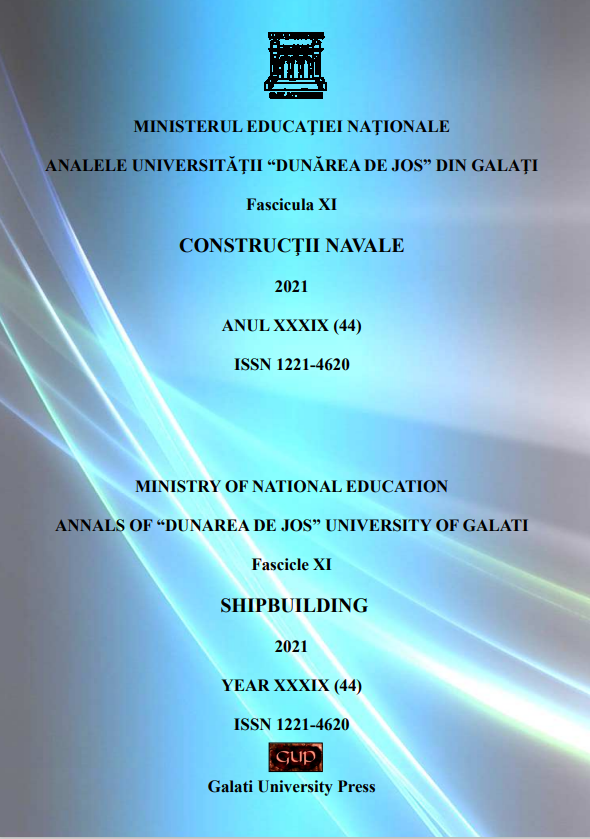Propulsion simulation on fully appended ship model
Abstract
This study presents the numerical investigation for the flow around the propeller of the ONR Tumblehome combatant in open water and for the flow around the same ship in the case of self-propulsion with actuator disk method. Computational Fluid Dynamics based on RANS-VOF solver have been used in order to analyse the flow. The free surface treatment is multi-phase flow approach, incompressible and nonmiscible flow phases are modelled through the use of conservation equations for each volume fraction of phase. Accuracy involves close attention to the physical modelling, particularly the effects of turbulence, as well as the numerical discretization.
Downloads
References
[2]. Guilmineau, E., Deng, G., B., Leroyer, A., Queutey, P., Visonneau, M., Wackers, J., “Influence of the turbulence closures for the wake prediction of a marine propeller”, Proc. of the 4th International Symposium on Marine Propulsors, 2015.
[3]. Duvigneau, R., Visonneau, M., Deng, G., B., “On the role played by turbulence closures in hull shape optimization at model and full-scale”, J. Marine Science and Technology, 8 (1), 1–25, 2003.
[4]. Queutey, P., Visonneau, M., “An interface capturing method for free-surface hydrodynamic flows”, Computers & Fluids, 36(9) pp 1481–1510, 2017.
[5]. Stern, F., Kim, H., T., Patel, V., C., Chen, H., C., “A viscous flow approach to the computation of propeller-hull interaction”, Journal of Ship Research, vol. 32, no. 4, pp. 246–262, 1988.
[6]. Hough, G., Ordway, D., “The generalized actuator disk.” Technical Report TAR-TR 6401, Therm Advanced Research Inc., 1964.
[7]. Mandru, A., Pacuraru, F., “The effect of appendages on ship resistance”, IOP Conf. Ser.: Mater. Sci. Eng. 1182 012041, 2021.




